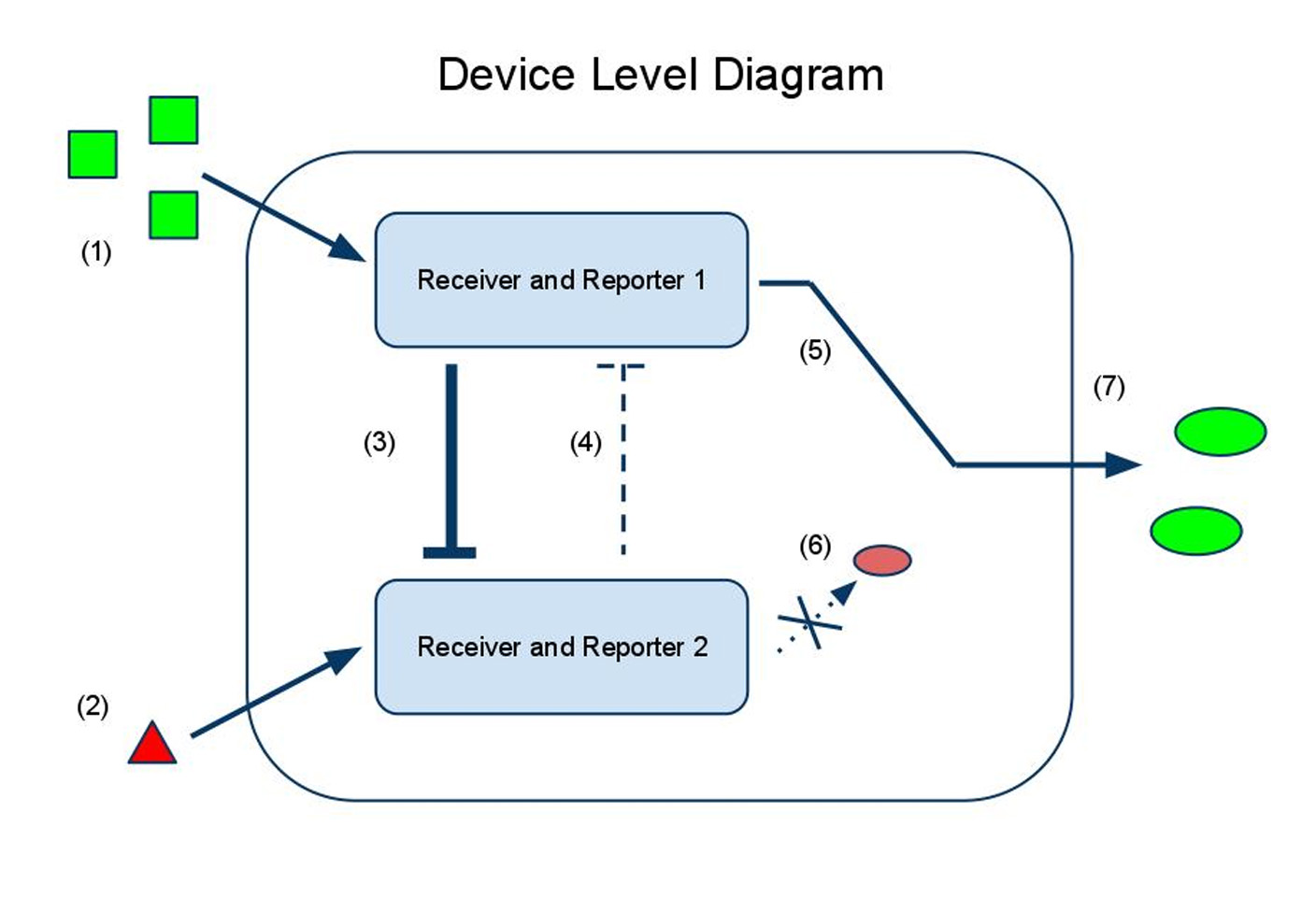Team:Stanford/Digital Sensor
From 2010.igem.org

| Home | Project | Applications | Modeling | Parts | Team | Notebook |
The sRNA Sensor
Overview
Our first sensor design is tuned to a single ratio of input chemicals and tells the user if the input chemicals are present in relative concentrations below, at, or above that ratio.
to calculate the difference in the concentrations of the two input chemicals. One input chemical (chemical A) binds to a promoter and causes the transcription of an mRNA coding for an output protein. The other input chemical (B) binds to a promoter and causes transcription of an sRNA, which is complementary to a target sequence overlapping the ribosome binding site of the mRNA sequence promoted by A. The sRNA then binds to the mRNA, preventing the ribosome from binding and synthesizing the output protein. In the ideal case, no output protein is produced if less A is present than B, and protein begins to be produced as soon as the concentration of A surpasses that of B. To change the threshold ratio detected by the sensor, multiple copies of the genes encoding either the mRNA or the sRNA can be placed downstream of the promoters.
Read about our other sensor or return to our project page.
Diagrams
 "
"

